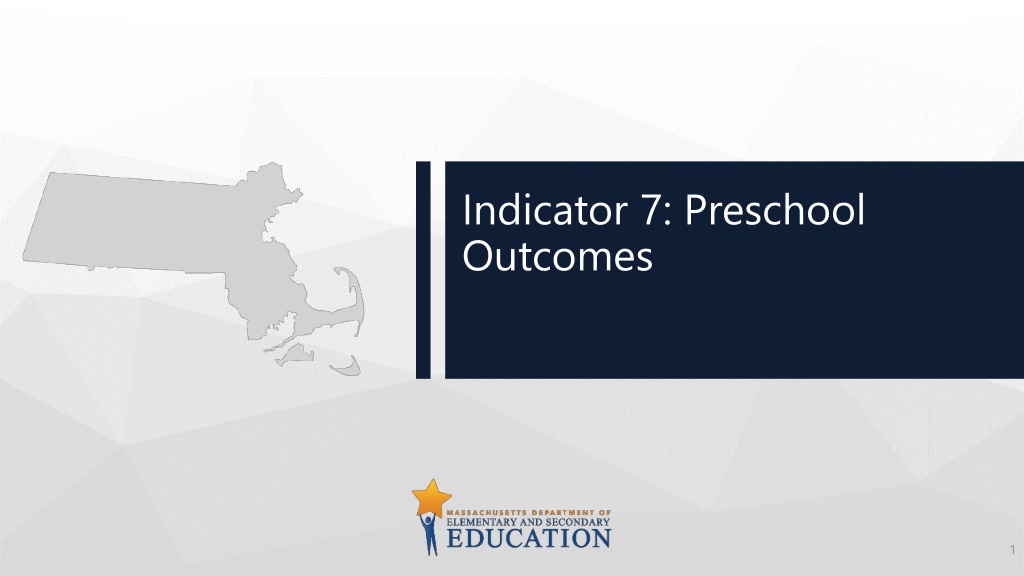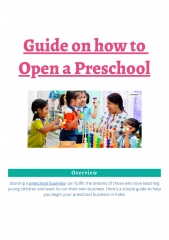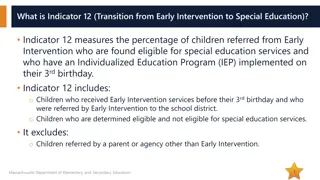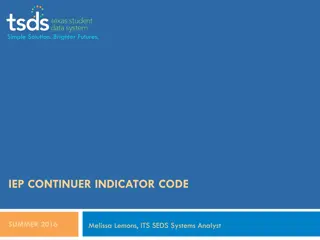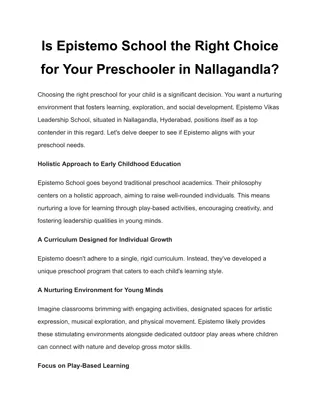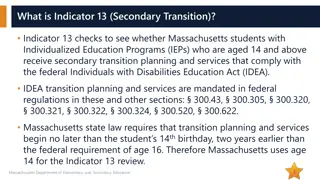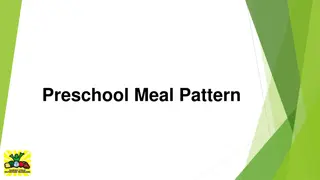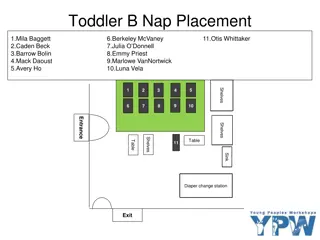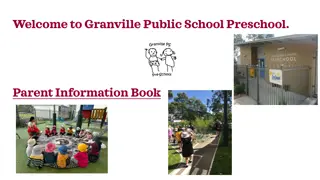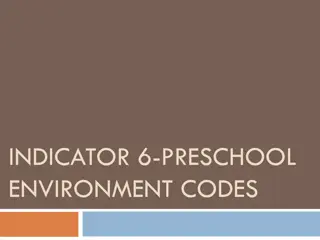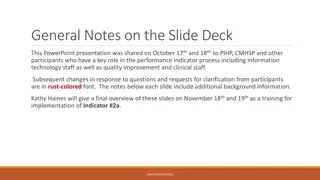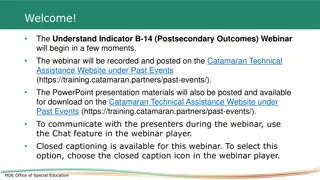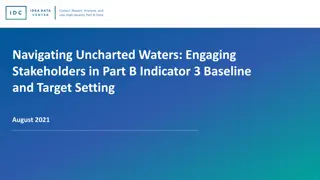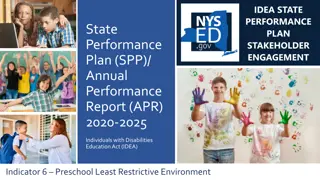Understanding Preschool Outcomes: Indicator 7 Insights
Explore Indicator 7 focusing on preschool children with IEPs and their improvements in social-emotional skills, knowledge acquisition, and appropriate behaviors. Learn why Indicator 7 is crucial for development and learning, see data measurements, targets for upcoming years, and access additional valuable resources from Massachusetts Department of Elementary and Secondary Education.
Download Presentation

Please find below an Image/Link to download the presentation.
The content on the website is provided AS IS for your information and personal use only. It may not be sold, licensed, or shared on other websites without obtaining consent from the author. Download presentation by click this link. If you encounter any issues during the download, it is possible that the publisher has removed the file from their server.
E N D
Presentation Transcript
Indicator 7: Preschool Outcomes 1
Presentation Outline What Indicator 7 is Why Indicator 7 is important Indicator 7 data overview Setting new Indicator 7 targets Additional resources Massachusetts Department ofElementaryandSecondaryEducation
What is Indicator 7? Indicator 7 looks at the percentage of preschool children with IEPs (ages 3 to 5) who improve in 3 outcomes: A. Positive social-emotional skills (including social relationships) B. Acquisition and use of knowledge and skills (language and literacy) C. Use of appropriate behaviors to meet their needs Massachusetts Department ofElementaryandSecondaryEducation 3
Indicator 7 Measurements Each outcome has two summary statements: Summary Statement 1: Of the preschool children with IEPs who entered preschool program below age expectations, the percent who made gains by the time they turned 6 years of age or exited the program. Summary Statement 2: The percent of preschool children who were within age expectations by the time they turned 6 years of age or exited the program. Massachusetts Department ofElementaryandSecondaryEducation 4
Why is Indicator 7 Important? Social/emotional health impacts development and learning (NAEYC, 2018) oMotivation and attitude toward school oFocus and participation in class activities oAcademic performance oEmotional regulation Social/emotional development, cognitive development, and language help predict school readiness (The College & Career Readiness & Success Center, 2013) Massachusetts Department ofElementaryandSecondaryEducation 5
Indicator 7 Targets for FFY20-FFY25 Sub- Indicator FFY 7A SS1 7A SS2 7B SS1 7B SS2 7C SS1 7C SS2 Targets 2020 2021 2022 2023 2024 2025 86.00% 86.00% 86.00% 86.50% 87.00% 88.00% 50.00% 50.00% 50.00% 50.25% 50.50% 51.00% 85.00% 85.00% 85.00% 85.50% 86.00% 87.00% 49.00% 49.00% 49.00% 49.25% 49.50% 50.00% 86.00% 86.00% 86.00% 86.50% 87.00% 88.00% 63.00% 63.00% 63.00% 63.25% 63.50% 64.00% Massachusetts Department ofElementaryandSecondaryEducation
Additional Information DESE - Early Childhood Special Education ECTA Center: Child Outcomes Impact of COVID 19 Pandemic on Children, Youth, and Families Massachusetts Department ofElementaryandSecondaryEducation 7
